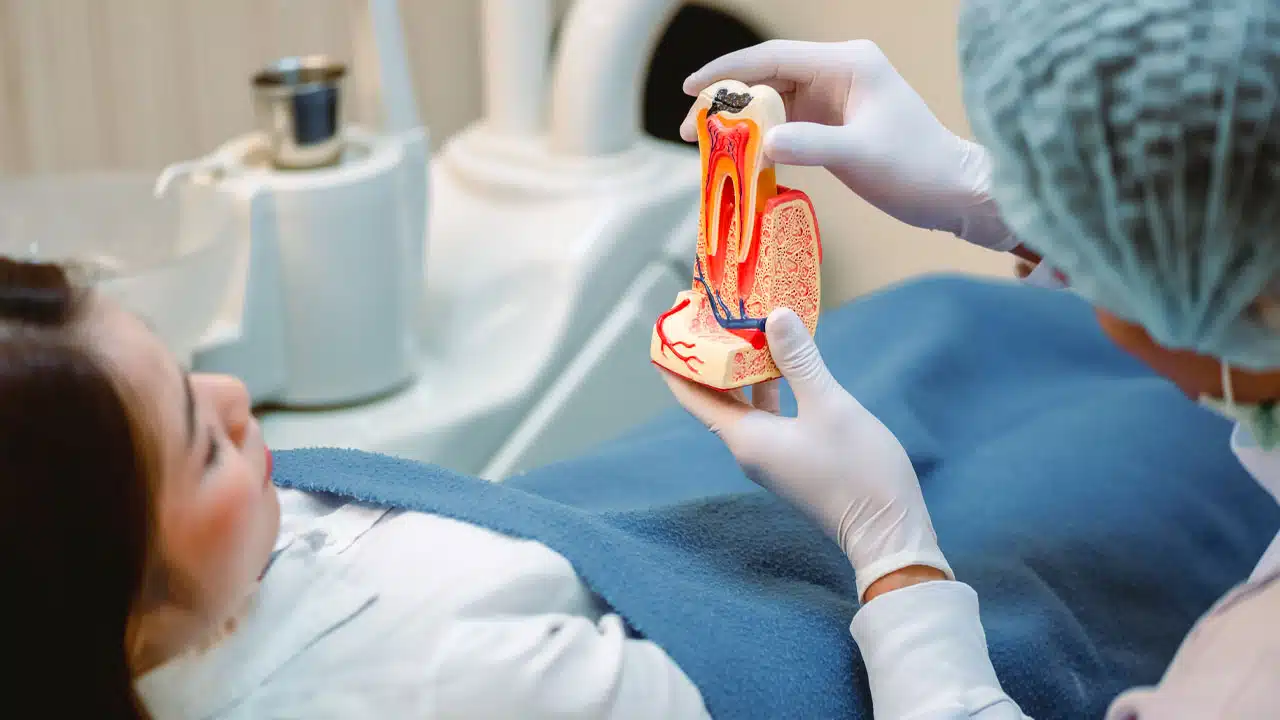
Root canals are a standard dental procedure to address severely decayed teeth, with over 15 million teeth treated each year. Although root canal therapy has a reputation for being painful, the treatment eliminates the source of the pain and helps preserve your natural tooth.
If you’ve been told you need a root canal treatment, it’s natural to feel anxious. Understanding what to expect at a root canal treatment can help you feel less apprehensive about the procedure.
What is a Root Canal?
Root canal therapy treats a tooth with infected or damaged pulp (the inner layer of the tooth). The procedure involves extracting the infected pulp, cleaning and disinfecting the pulp chamber, and filling the tooth to prevent further damage. Patients often need a crown fitted to restore the tooth’s integrity and function.
Before Treatment
Your dentist will take X-rays of your tooth to get a clear view of the tooth canal and check the surrounding bone in case the infection has damaged the underlying jaw. They then apply a local anesthetic to numb the area around the tooth to ensure the procedure is as comfortable as possible. This is usually done with a small injection near the tooth. You might feel a little pinch or sting, but it should be minor.
During Treatment
During the root canal treatment, your dentist will place a dental dam (a small protective sheet) over the area to isolate the tooth and keep it clean and dry. They will then use a high-speed dental handpiece to drill into the tooth’s crown to access the pulp chamber. Using an endodontic burr and barbed broach, your dentist will remove the infected and necrotic tissue inside the tooth.
After the pulp has been removed, the inside of the tooth will be cleaned and disinfected. The cleaned tooth’s interior is then shaped and filled with a biocompatible material known as gutta-percha and sealed with a temporary filling.
After Treatment
After the procedure, your tooth may feel sensitive due to tissue inflammation. Over-the-counter pain medications can alleviate any discomfort. Your dentist will send you home with aftercare instructions, and you may require antibiotics to eliminate any remaining infection.
You’ll need to attend a follow-up visit to remove the temporary filling and check the healing process. If everything looks healthy, your dentist will place a crown or permanent filling to protect the tooth.
Ensuring Your Comfort and Dental Health
A root canal treatment can save your natural tooth and prevent the need for an extraction, implant, or bridge. While the idea of a root canal may seem intimidating, understanding what to expect can help manage anxiety and minimize discomfort. While root canal treatments have a reputation for being painful, the procedure itself is usually no more uncomfortable than getting a filling.
Don’t let fear prevent you from taking care of your dental health. If you’re experiencing severe dental pain, contact Valley Dental Care of Plainfield. Our experienced dentists can walk you through every step of your treatment and ensure a comfortable, stress-free experience. Call us today at (815) 436-6800 to schedule your appointment.